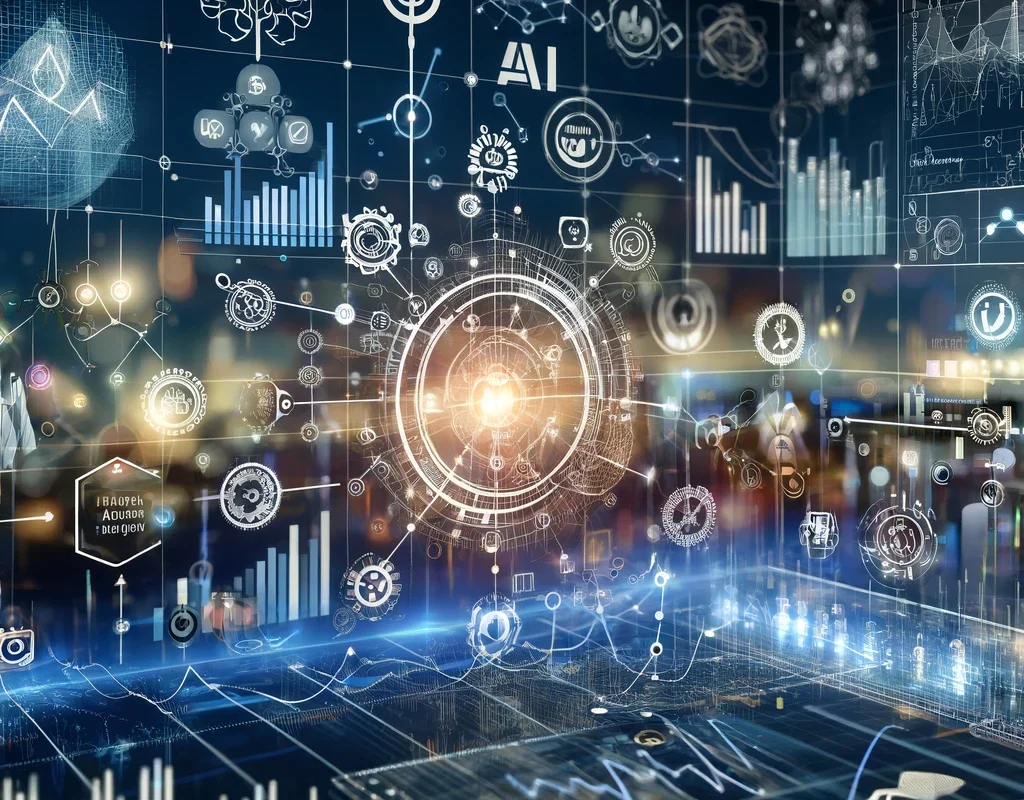Predictive analytics has become a game changer across industries, helping businesses make proactive decisions based on future trends. Artificial intelligence (AI) has accelerated this field, offering more precise forecasting methods. In this article, we’ll delve into how to use AI for predictive analytics in real-world applications, covering the essential steps, tools, and industry applications that can transform your business into a forward-thinking powerhouse.
Understanding Predictive Analytics
Predictive analytics involves the use of data, statistical algorithms, and machine learning techniques to identify the likelihood of future outcomes based on historical data. At its core, it aims to predict future trends, behaviors, and events, giving organizations the ability to make informed, strategic decisions.
The power of predictive analytics lies in its capacity to forecast outcomes in various domains, from financial markets to healthcare, retail, and beyond. But its full potential is realized when coupled with AI technologies, as they enhance its precision, scalability, and adaptability.
How AI Enhances Predictive Analytics
Artificial intelligence is a catalyst for predictive analytics. By integrating AI into predictive models, businesses can unlock numerous advantages:
- Improved Accuracy: AI can analyze vast amounts of data at high speeds, identifying patterns and anomalies that traditional methods may overlook.
- Real-Time Predictions: Unlike conventional predictive models that rely on historical data, AI can provide real-time insights by constantly updating its models with new data.
- Automation: AI-driven predictive analytics can automate data collection, analysis, and decision-making processes, reducing human error and saving time.
- Personalization: AI can generate tailored predictions for individual users or segments, allowing for more personalized customer experiences or targeted business strategies.
By leveraging AI, businesses can make more accurate, timely, and actionable predictions, driving competitive advantage and improved operational efficiency.
Key AI Technologies in Predictive Analytics
Several AI technologies are transforming the way organizations approach predictive analytics. These include:
- Machine Learning (ML): ML algorithms learn from data, improving their predictions as they process more information. This self-improving nature is ideal for forecasting evolving trends.
- Deep Learning: A subset of machine learning, deep learning uses neural networks with multiple layers to analyze complex patterns. It’s highly effective in processing large datasets with intricate relationships, such as image recognition or natural language processing.
- Natural Language Processing (NLP): NLP enables machines to understand and interpret human language. In predictive analytics, NLP can analyze unstructured data like customer reviews or social media to predict market trends or customer sentiment.
These technologies offer the foundation for building sophisticated predictive models that can uncover hidden patterns in data, providing businesses with powerful forecasting tools.
AI Algorithms for Predictive Analytics
A wide variety of AI algorithms are commonly used in predictive analytics, each with its strengths depending on the application. Some of the most popular algorithms include:
- Linear Regression: Ideal for predicting continuous outcomes based on historical data.
- Decision Trees: These break down complex decisions into a tree structure, making them easy to interpret and useful for both classification and regression tasks.
- Random Forests: A collection of decision trees that improves accuracy by reducing the variance in predictions.
- Neural Networks: Effective for capturing non-linear relationships in data, they are widely used in deep learning applications.
- Support Vector Machines (SVM): A powerful classification technique that can also handle regression tasks.
By selecting the right algorithm for a given application, businesses can develop predictive models that yield accurate and actionable insights.
Real-World Applications of AI in Predictive Analytics
AI-driven predictive analytics has far-reaching applications across many industries. From forecasting stock prices in finance to predicting equipment failures in manufacturing, the impact of AI is significant and growing.
Predictive Analytics in Finance
In the finance sector, AI is revolutionizing predictive analytics by providing more accurate financial forecasting, fraud detection, and risk management. AI models can analyze massive datasets to predict stock movements, optimize trading strategies, and even automate trading decisions in real-time.
Additionally, AI helps financial institutions assess credit risk, offering more precise predictions of customer defaults based on historical data. This has streamlined loan approvals and improved overall risk management for lenders.
AI-Driven Healthcare Predictions
AI’s role in predictive analytics is transforming healthcare by improving patient outcomes, enhancing operational efficiency, and reducing costs. Predictive models powered by AI can forecast disease outbreaks, predict patient readmissions, and even detect early signs of illnesses, allowing for timely intervention.
For example, hospitals use AI-driven predictive analytics to predict patient demand, optimizing resource allocation and staff scheduling. This not only improves care quality but also reduces operational bottlenecks and wait times.
Retail and Customer Behavior Forecasting
In the retail industry, AI enables businesses to predict customer behavior, helping them optimize inventory management, pricing strategies, and marketing campaigns. By analyzing customer purchase patterns and preferences, AI-driven predictive analytics allows retailers to deliver personalized recommendations, improving customer satisfaction and increasing sales.
AI can also anticipate shifts in demand, helping retailers avoid stock shortages or overstock situations. This leads to better inventory management and improved profitability.
AI in Manufacturing
Manufacturing is another industry that has embraced AI-driven predictive analytics, particularly for predictive maintenance. By analyzing sensor data from machinery, AI models can predict equipment failures before they occur, reducing downtime and maintenance costs.
Moreover, AI can optimize production processes by forecasting demand fluctuations, enabling manufacturers to adjust their output and inventory levels accordingly. This leads to more efficient operations and a significant reduction in waste.
You can also read; How to Choose the Right Machine Learning Algorithm for Your Project
Steps to Implement AI for Predictive Analytics
Implementing AI for predictive analytics involves several critical steps, each of which requires careful planning and execution:
- Data Collection and Preparation: Quality data is the backbone of predictive analytics. Ensuring that the data is clean, relevant, and representative of the problem at hand is essential for building accurate models.
- Model Selection and Training: Once the data is prepared, the next step is selecting the right AI algorithm and training the model. This often involves trial and error, as different models may perform better depending on the type of data and the prediction task.
- Model Testing and Validation: Before deploying the model, it’s crucial to test its accuracy using a separate validation dataset. This ensures that the model performs well not only on historical data but also on unseen future data.
- Deployment and Monitoring: After the model is validated, it can be deployed into production. Ongoing monitoring is necessary to ensure the model remains accurate as new data becomes available.
By following these steps, businesses can successfully implement AI-driven predictive analytics and start reaping the benefits of more informed, data-driven decision-making.



